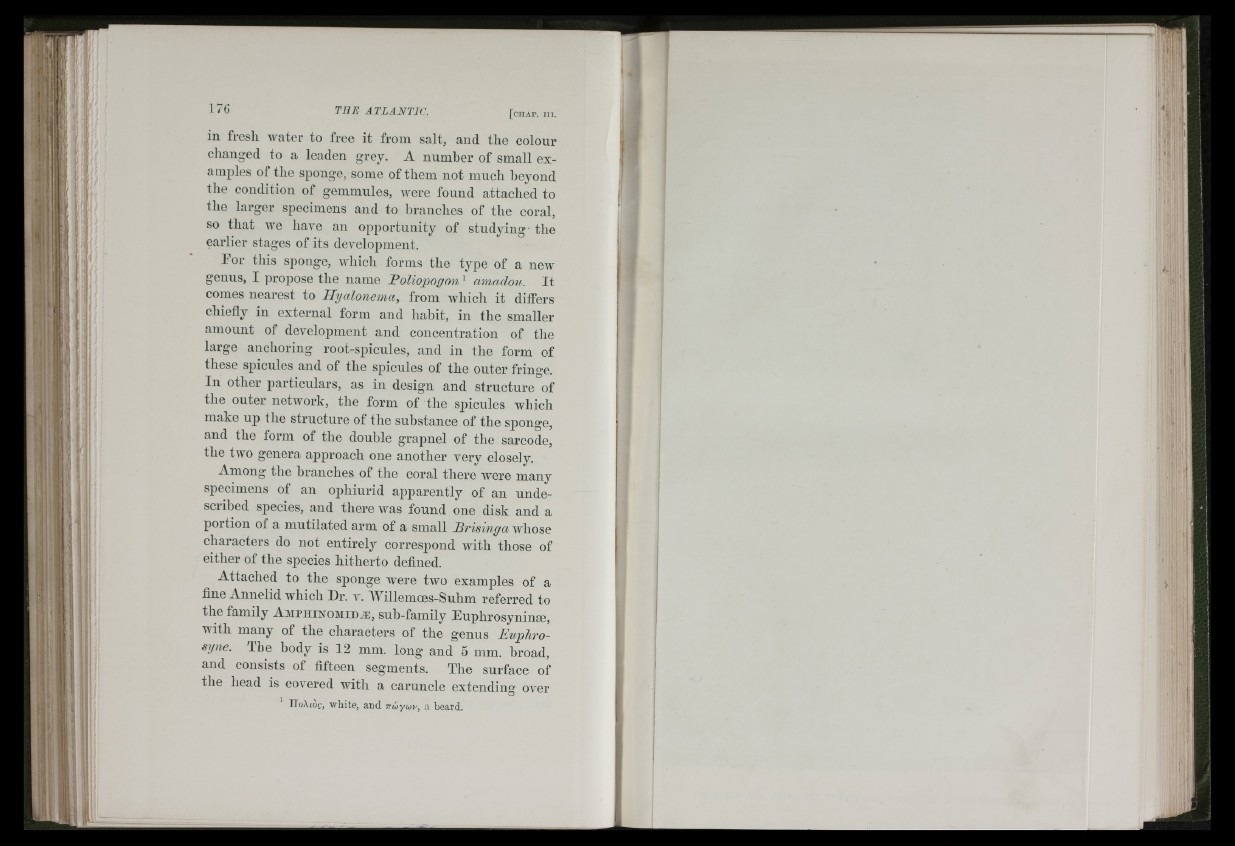
!il
176 T H E A T L A N T I C .
■IM <
1 !
in fresh water to free it from salt, and the colour
changed to a leaden grey. A number of small examples
of the sponge, some of them not much beyond
the condition of gemmules, Avere found attached to
the larger specimens and to branches of the coral,
so that we liave an opportunity of studying the
earlier stages of its deyelopment.
For this sponge, AAdiich forms the type of a new
genus, I propose the name Boliopogon ^ amadou. It
comes nearest to Hyalonema, from Avhich it differs
chiefly in external form and habit, in the smaller
amount of development aud coiicentration of the
large aiichoriug root-spicules, and in the form of
these spicules and of the spicules of the outer fringe.
In other particulars, as in design aud structure of
the outer iietAvork, the form of the spicules which
make up the structure of the substance of the sponge,
and the form of the double grapnel of the sarcode,
the tAvo genera approach one another very closely.
Among the brauches of the coral there A^vere many
specimeus of an ophiurid apparently of an undescribed
species, aud there Avas found one disk and a
portion of a mutilated arm of a small Brisinga whose
characters do not entirely correspond with those of
either of the species hitherto defined.
Attached to the sponge Avere two examples of a
fine Annelid which Dr. v. Willemoes-Suhm referred to
the family Amphinomidæ, sub-family Fuphrosyuinæ,
with many of the characters of the genus Euphro-
syne. Tbe body is 12 mm. long and 5 mm. broad,
aud consists of fifteen segments. The surface of
the head is coA'ered with a caruncle extending over
lloXiOf, white, and Trwyw)', a beard.
'ten ^
■S -i.